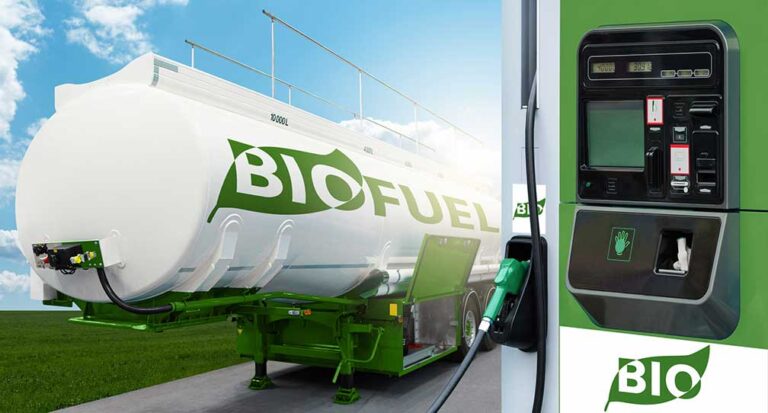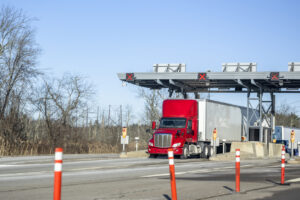The pursuit of a zero-emissions fleet of transport vehicles is relentless. Hardly a day goes by without another government push to further reduce greenhouse gas (GHG) and other pollutants from the exhaust of commercial motor vehicles (CMVs).
The “solution” most commonly referenced is electric vehicles (EVs) — but, if truth be told, the technology is a long way from being viable for long-haul trucking operations. With that said, the Truckload Carriers Association (TCA) recognizes the nation’s need for zero-emissions vehicles in general but believes multiple solutions should be explored.
“It’s not a question of IF we get to zero emissions, but more so WHEN we get to zero emissions,” explained David Heller, TCA’s senior vice president of safety and government affairs, during a January 10 webinar.
“I think our history demonstrates that we are more than willing to do our part in terms of zero-emission vehicles,” he said. “However, it can’t be rolled out tomorrow because of three magical words: Achievability in terms of the rules and technology; Affordability in terms of the equipment; and Reliability of the equipment and the infrastructure.”
Allen Schaeffer, executive director of the Engine Technology Forum, believes too little credit is given to the trucking industry for the progress it has made thus far in reducing emissions. What’s more, he thinks it’s possible to achieve even more reductions in harmful emissions through the industry’s current internal combustion engine (ICE) than through moving to an all-electric fleet.
“When you look at the level of reduction (compared to pre-2010 models), we’re talking over 98% reduction in allowable levels of particulate from heavy duty truck engines,” Schaeffer said. “And now, in 2010 and later model years, a similar amount of reduction from NOx emissions.” In fact, the forum refers to current models “near-zero emissions vehicles.”
Today, the focus is more on reduction of GHG emissions than NOx or particulates.
“There are tremendous opportunities for reducing carbon emissions from the existing fleet of internal combustion engines, diesel vehicles,” Schaeffer said. “One way you can do that is to start using biodiesel or renewable diesel fuel that has anywhere from 50% to 85% less carbon emissions than traditional petroleum diesel. And that’s something that any diesel engine can start using today.”
Another way carriers can quickly reduce GHG emissions is to accelerate the removal of pre-2007 trucks from their fleets.
“The opportunity to accelerate the turnover of the existing fleet and get more new vehicles out there will go a long way,” Schaeffer said. “For owners of old equipment, (investing in newer equipment) is going to make their lives easier in terms of maintenance and safety features.”
According to information on the Engine Technology Forum’s website, it would take more than 60 of today’s modern diesel-powered heavy trucks to equal the emissions of one 1988 model. However, only 57% of registered CMVs today are 2010 model-year or newer.
“There’s about 65% or so on the road today that have at least a particulate filter on them,” Schaeffer explained. “That means that there’s probably 30% of the commercial trucks out there that are pre-2007.”
The Engine Technology Forum performed a study encompassing trucking in the U.S.’s 10 Northeastern states comparing the benefits of changing to an all-electric fleet of trucks to the benefits of removing pre-2007 diesel powered trucks and changing the fleet to biodiesel over a 10-year period. Schaeffer explained the results.
“The highlight simply is that (this) study showed we could reduce three times more carbon emissions at 25% of the cost by accelerating the turnover of the fleet and using the low carbon renewable biodiesel fuels as compared to electrification,” he said.
Ann Rundle, vice president of electrification and autonomy for ACT Research, isn’t convinced that diesel engines can be viewed as a long-term solution.
“There is more renewable diesel sourcing coming into play but the question is, where are all these sources for ‘renewable’ diesel?” she asked.
Rundle pointed to the 2027 round of EPA mandated emissions standards that will add additional technology, and cost, to commercial vehicles
“It’s in the neighborhood of $25,000 to $30,000, especially on a Class 8 truck, to add after treatment,” she explained. “And, by the way, it will still happen if you’re burning biodiesel.”
Rundle thinks ICEs may still be part of the solution — but not diesel.
“If you look at renewable natural gas, you’ve even got a better story, because with renewable natural gas you’re eliminating emissions of methane and it doesn’t have to have the same extensive after treatment that biodiesel or diesel or even a hydrogen internal combustion engine would require,” she said. “So, you start to eliminate those costs.”
Improved emissions from ICEs, however, may only be a temporary solution.
“You’ve got technology for batteries still improving, and energy density is getting better,” she said. “Battery prices are dropping.”
There may come a point when battery power is cleaner, cheaper and more reliable than ICEs, but it isn’t here yet. OEMs, however, aren’t betting on diesel for the future.
“OEMs have basically said, ‘This is the last diesel engine we’re developing,’” Rundle said. “Traton has the universal, I think, 13-liter, and said that they are not going to do another ground up engine development. Daimler came out last year and said, ‘We’re not doing this either.’”
Regardless of equipment age, improving a vehicle’s fuel efficiency still reduces emissions of all types while lowering fuels costs. There are also products on the market that can be used to reduce the aerodynamic drag forces against a tractor-trailer.
Jeff Hunter, executive vice president of sales and marketing for FlowBelow, explained how these products can help a fleet’s bottom line.
“Paramount would be the improved fuel economy. We do a really good job of controlling costs, so the ROI is pretty rapid,” he said, adding that FlowBelow products are standard on OEM tractor builds, and the company is looking to do the same for trailers.
While there are many alternatives in the works for achieving zero emissions in the trucking industry, the final solution remains to be seen.
This article originally appeared in the March/April 2024 edition of Truckload Authority, the official publication of the Truckload Carriers Association.
Cliff Abbott is an experienced commercial vehicle driver and owner-operator who still holds a CDL in his home state of Alabama. In nearly 40 years in trucking, he’s been an instructor and trainer and has managed safety and recruiting operations for several carriers. Having never lost his love of the road, Cliff has written a book and hundreds of songs and has been writing for The Trucker for more than a decade.














